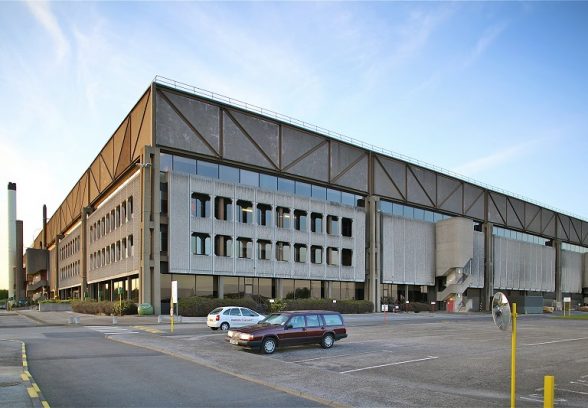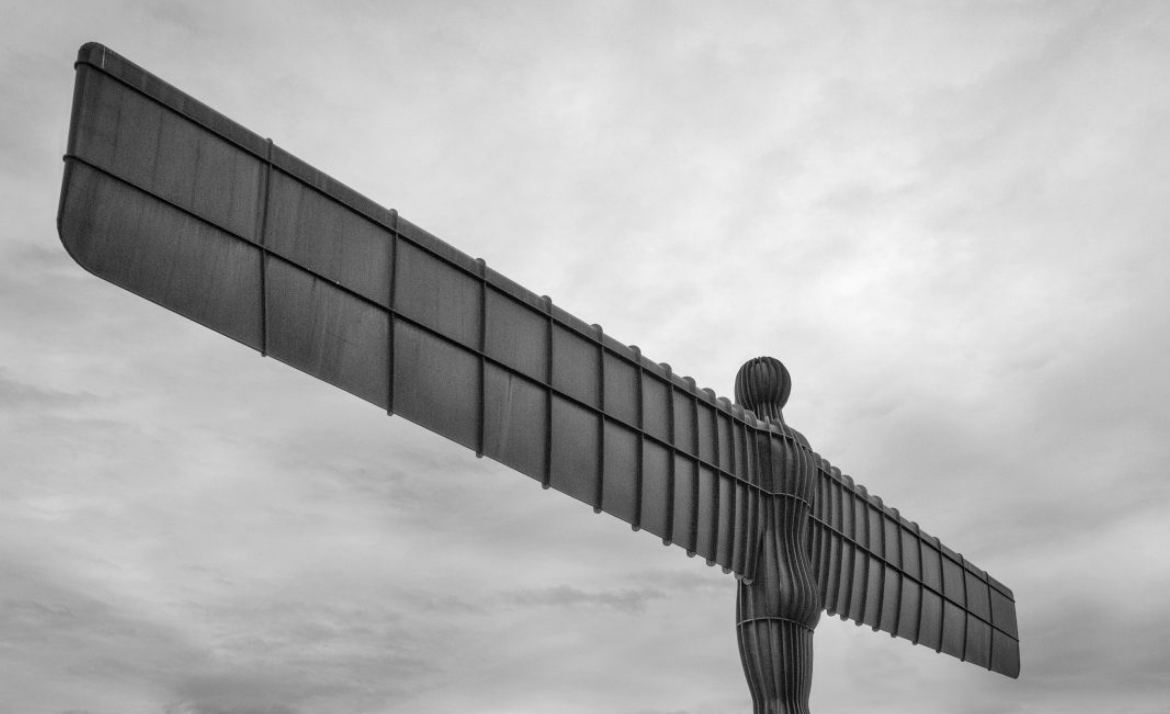This website uses cookies
This website uses cookies to enable it to function properly and to analyse how the website is used. Please click 'Close' to accept and continue using the website.



The inaugural meeting in April at Leicester City Hall was a good opportunity to catch up on the news within our region.
Concerns were voiced about the present condition of Sam Scorer’s 1960-61 hyperbolic paraboloid petrol station at Markham Moor along the A1 in Nottinghamshire. Since the last tenants Little Chef vacated, the building has looked increasingly worn and though Grade II listed in 2012 its location near the junction with the A57 renders access difficult. Perhaps the retail space should be removed and roof restored to its original glory?
A bigger worry in more ways than one regards the future of the Horizon Factory at Nottingham since Imperial Tobacco announced their intention to vacate last year. The building was complete in 1971 and designed by Arup Associates as a muscular grid of concrete holding up a space frame roof allowing for a generous space beneath. It is understood that an application for listing has already been submitted.
Nearby, the Boots industrial site has had a long history of conservation but there are still remarkable structures outside of current statutory lists and at least two of these are threatened by the proposals to redevelop the site for housing and an enterprise zone. Plans have already been granted conditional permission to demolish the Deco gatehouses at the northern entrance in order to make way for a new public entrance. Concerns were raised with local councillor Steve Barber, and now it seems the gatehouses will be rebuilt at an alternative location.
Meanwhile, Sir Owen Williams’ D13 Chemical Building is marked for demolition. Surely a building with such an impressive span could be found a new use as a community or conference hall?
In Derby the 1971 Ted Cullinan designed Olivetti building is to be renovated by new occupants the East Midlands Logistics Centre. Hugh Pearman visited recently and wrote an informative article in the RIBA Journal.
Also in Derby, members were surprised to hear about the proposals to demolish the Derby Assembly Rooms after a fire last year. The building was designed by Casson and Conder and built in the 1970s. It is understood that an immunity from listing application has recently been submitted. Though listing might actually prevent architects from tackling some problems of the original design – its lack of entrance to the square for example – it is hoped by C20 members that the building will be sensibly adapted rather than demolished.
It wasn’t all doom and gloom, as we celebrated the recent news that St Joseph’s Church in Leicester has been Grade II listed. This centrally planned modernist building was designed by the Rutland architect Thomas Wilson, and so it’s perhaps no wonder that its reinforced concrete drum and tower is faced with Stamford stone buff brick.
Chris Matthews

Become a C20 member today and help save our modern design heritage.